-
Executive Summary
-
Market Introduction
-
Market Definition
-
Scope of the Study
-
List of Assumptions
-
Markets Structure
-
Market Research Methodology
-
Research
-
Process
-
Primary Research
-
Secondary Research
-
Market
-
Size Estimation
-
Forecast Model
-
Market Dynamics of the Global Elastomeric
-
Sealants Market
-
Introduction
-
Drivers
-
Restraints
-
Opportunities
-
Challenges
-
Trends/Technology
-
Market
-
Factor Analysis of the Global Elastomeric Sealants Market
-
Supply Chain
- Raw Material Suppliers
- Manufacturers/Producers
- Distributors/Retailers/Wholesalers/E-Commerce
- End-Use Industry
-
Analysis
-
Porter’s Five Forces Analysis
- Threat of New Entrants
- Bargaining Power of Buyers
- Bargaining Power of Suppliers
- Threat of Substitutes
- Intensity of Competitive Rivalry
-
Pricing Analysis
-
Global Elastomeric Sealants Market, by Product Type
-
Introduction
-
Silicone
- Market Estimates & Forecast,
- Market Estimates & Forecast, by Region, 2020–2027
-
Polysulfide
- Market Estimates & Forecast, 2020–2027
- Market Estimates & Forecast, by Region, 2020–2027
-
Polyurethane
- Market Estimates & Forecast, 2020–2027
- Market Estimates
-
& Forecast, by Region, 2020–2027
-
Silane Modified Polymers
- Market Estimates & Forecast, 2020–2027
- Market Estimates
-
& Forecast, by Region, 2020—2027
-
Others
- Market Estimates
- Market Estimates & Forecast, by Region,
-
& Forecast, 2020–2027
-
Global Elastomeric Sealants Market, by End-Use Industry
-
Introduction
-
Building & Construction
- Market Estimates
- Market Estimates & Forecast, by Region,
-
& Forecast, 2020–2027
-
Automotive
- Market Estimates & Forecast,
- Market Estimates & Forecast, by Region, 2020–2027
-
Electrical & Electronics
- Market Estimates & Forecast, 2020–2027
- Market Estimates & Forecast, by Region, 2020–2027
-
Aerospace
- Market Estimates & Forecast, 2020–2027
-
& Defense
-
Market Estimates & Forecast, by Region, 2020–2027
-
Marine
- Market Estimates &
-
Market Estimates & Forecast, 2020–2027
-
Forecast, by Region, 2020–2027
-
Others
- Market Estimates
- Market Estimates & Forecast, by Region,
-
& Forecast, 2020–2027
-
Global Elastomeric Sealants Market, by Region
-
Introduction
-
North America
- Market Estimates & Forecast, 2020–2027
- Market Estimates & Forecast, by Product Type, 2020–2027
-
Market Estimates & Forecast, by End-Use Industry, 2020–2027
-
US
-
Estimates & Forecast, by Product Type, 2020–2027
-
& Forecast, by End-Use Industry, 2020–2027
-
Market Estimates & Forecast, 2020–2027
-
Forecast, by Product Type, 2020–2027
-
by End-Use Industry, 2020–2027
-
& Forecast, 2020–2027
-
Type, 2020–2027
-
Market Estimates & Forecast, 2020–2027
-
Market
-
Market Estimates
-
Canada
-
Market Estimates &
-
Market Estimates & Forecast,
-
Europe
- Market Estimates
- Market Estimates & Forecast, by Product
- Market Estimates & Forecast, by End-Use Industry,
- Germany
- France
-
Market Estimates & Forecast, by End-Use Industry, 2020–2027
-
Italy
-
Market Estimates & Forecast, 2020–2027
-
Market Estimates & Forecast, by Product Type, 2020–2027
-
Estimates & Forecast, by End-Use Industry, 2020–2027
-
& Forecast, by Product Type,2020–2027
-
Forecast, by End-Use Industry, 2020–2027
-
Estimates & Forecast, 2020–2027
-
by Product Type,2020–2027
-
End-Use Industry, 2020–2027
-
& Forecast, 2020–2027
-
Product Type,2020–2027
-
Industry, 2020–2027
-
Forecast, 2020–2027
-
Type, 2020–2027
-
Industry, 2020–2027
-
& Forecast, 2020–2027
-
Product Type, 2020–2027
-
End-Use Industry, 2020–2027
-
& Forecast, 2020–2027
-
Type, 2020–2027
-
Market
-
Spain
-
Market Estimates & Forecast, 2020–2027
-
Market Estimates
-
Market Estimates &
-
UK
-
Market
-
Market Estimates & Forecast,
-
Market Estimates & Forecast, by
-
Russia
-
Market Estimates
-
Market Estimates & Forecast, by
-
Market Estimates & Forecast, by End-Use
-
Poland
-
Market Estimates &
-
Market Estimates & Forecast, by Product
-
Market Estimates & Forecast, by End-Use
-
Rest of Europe
-
Market Estimates
-
Market Estimates & Forecast, by
-
Market Estimates & Forecast, by
-
Asia-Pacific
- Market Estimates
- Market Estimates & Forecast, by Product
- Market Estimates & Forecast, by End-Use Industry,
- China
-
Market Estimates & Forecast, by End-Use Industry, 2020–2027
-
India
-
Market Estimates & Forecast, 2020–2027
-
Market Estimates & Forecast, by Product Type, 2020–2027
-
Estimates & Forecast, by End-Use Industry, 2020–2027
-
& Forecast, by Product Type, 2020–2027
-
Forecast, by End-Use Industry, 2020–2027
-
& Forecast, by Product Type, 2020–2027
-
Forecast, by End-Use Industry, 2020–2027
-
& Forecast, by Product Type, 2020–2027
-
Forecast, by End-Use Industry, 2020–2027
-
& Forecast, by Product Type, 2020–2027
-
Forecast, by End-Use Industry, 2020–2027
-
Estimates & Forecast, 2020–2027
-
by Product Type, 2020–2027
-
End-Use Industry, 2020–2027
-
& Forecast, 2020–2027
-
Product Type, 2020–2027
-
Industry, 2020–2027
-
& Forecast, 2020–2027
-
Product Type, 2020–2027
-
Industry, 2020–2027
-
Forecast, 2020–2027
-
Type, 2020–2027
-
Estimates & Forecast, 2020–2027
-
by Product Type, 2020–2027
-
End-Use Industry, 2020–2027
-
& Forecast, 2020–2027
-
Type, 2020–2027
-
Market
-
Japan
-
Market Estimates & Forecast, 2020–2027
-
Market Estimates
-
Market Estimates &
-
Australia & New Zealand
-
Market Estimates & Forecast, 2020–2027
-
Market Estimates
-
Market Estimates &
-
Rest of Asia-Pacific
-
Market Estimates & Forecast, 2020–2027
-
Market Estimates
-
Market Estimates &
-
Middle East & Africa
- Market Estimates & Forecast, 2020–2027
- Market Estimates
- Market Estimates &
- GCC
- Israel
- North Africa
- Turkey
- Rest of Middle East & Africa
-
Latin America
- Market Estimates
- Market Estimates & Forecast, by Product
- Market Estimates & Forecast, by End-Use Industry,
- Brazil
- Argentina
-
Market Estimates & Forecast, by End-Use Industry, 2020–2027
-
Mexico
-
Market Estimates & Forecast, 2020–2027
-
Market Estimates & Forecast, by Product Type, 2020–2027
-
Estimates & Forecast, by End-Use Industry, 2020–2027
-
Latin America
-
Market
-
Rest of
-
Market Estimates & Forecast, 2020–2027
-
Market Estimates & Forecast, by Product Type, 2020–2027
-
Market Estimates & Forecast, by End-Use Industry, 2020–2027
-
Company
-
Landscape
-
Introduction
-
Market Key Strategies
-
Key Development
-
Analysis (Expansion/Merger & Acquisitions/Joint Venture/New Product Development/Agreement/Investment)
-
Company Profiles
-
3M
- Company Overview
- Financial
- Product/Business Segment Overview
- Key Strategies
- Key Developments
- SWOT Analysis
-
Updates
-
DowDuPont Inc.
- Company Overview
- Financial Updates
- Product/Business
- Key Strategies
- Key Developments
-
Segment Overview
-
SWOT Analysis
-
Henkel AG & Co. KGaA
- Company Overview
- Financial Updates
- Product/Business Segment Overview
- Key Developments
- SWOT Analysis
- Company Overview
- Financial Updates
- Key Strategies
- Key Developments
- SWOT Analysis
-
Key Strategies
-
Arkema SA
-
Product/Business Segment Overview
-
Sika AG
- Company Overview
- Product/Business Segment Overview
- Key
- Key Developments
- SWOT Analysis
-
Financial Updates
-
Strategies
-
H.B.
- Company Overview
- Financial Updates
- Key Strategies
- Key Developments
- SWOT Analysis
-
Fuller Company
-
Product/Business Segment Overview
-
RPM International Inc.
- Company Overview
- Financial Updates
- Product/Business Segment Overview
- Key Developments
- SWOT Analysis
- Company Overview
- Financial Updates
- Product/Business Segment Overview
- Key Strategies
- SWOT Analysis
-
Key Strategies
-
PPG Industries, Inc.
-
Key Developments
-
VCM Polyurethanes Pvt. Ltd.
- Company Overview
- Financial Updates
- Product/Business
- Key Strategies
- Key Developments
-
Segment Overview
-
SWOT Analysis
-
Wacker Chemie AG
- Company Overview
- Product/Business Segment Overview
- Key Developments
- SWOT Analysis
- Company Overview
- Financial Updates
- Key Strategies
- Key
- SWOT Analysis
-
Financial Updates
-
Key Strategies
-
Mapei SpA
-
Product/Business Segment Overview
-
Developments
-
KCC CORPORATION
- Financial Updates
- Product/Business Segment
- Key Strategies
- Key Developments
-
Company Overview
-
Overview
-
SWOT Analysis
-
Conclusion
-
LIST OF TABLES
-
Global
-
Elastomeric Sealants Market: by Region, 2020–2027
-
North America:
-
Elastomeric Sealants Market, by Country, 2020–2027
-
Europe: Elastomeric
-
Sealants Market, by Country, 2020–2027
-
Asia-Pacific: Elastomeric
-
Sealants Market. by Country, 2020–2027
-
Middle East & Africa:
-
Elastomeric Sealants Market, by Country, 2020–2027
-
Latin America:
-
Elastomeric Sealants Market, by Country, 2020–2027
-
Global Elastomeric
-
Sealants Product Type Market, by Regions, 2020–2027
-
North America:
-
Elastomeric Sealants Product Type Market, by Country, 2020–2027
-
Table
-
Europe: Elastomeric Sealants Product Type Market, by Country, 2020–2027
-
Table10 Asia-Pacific: Elastomeric Sealants Product Type Market, by Country, 2020–2027
-
Table11 Middle East & Africa: Elastomeric Sealants Product Type Market, by
-
Country, 2020–2027
-
Table12 Latin America: Elastomeric Sealants Product
-
Type Market, by Country, 2020–2027
-
Global Elastomeric Sealants
-
End-Use Industry Market, by Regions, 2020–2027
-
Table14 North America:
-
Elastomeric Sealants End-Use Industry Market, by Country, 2020–2027
-
Table15
-
Europe: Elastomeric Sealants End-Use Industry Market, by Country, 2020–2027
-
Table16 Asia-Pacific: Elastomeric Sealants End-Use Industry Market, by Country,
-
Table17 Middle East & Africa: Elastomeric Sealants End-Use
-
Industry Market, by Country, 2020–2027
-
Table18 Latin America: Elastomeric
-
Sealants by End-Use Industry Market, by Country, 2020 – 2027
-
Table19
-
Global Product Type Market, by Region, 2020–2027
-
Table20 Global End-Use
-
Industry Market, by Region, 2020–2027
-
Table21 North America: Elastomeric
-
Sealants Market, by Country, 2020–2027
-
Table22 North America: Elastomeric
-
Sealants Market, by Product Type, 2020–2027
-
Table23 North America: Elastomeric
-
Sealants Market, by End-Use Industry, 2020–2027
-
Table24 Europe: Elastomeric
-
Sealants Market, by Country, 2020–2027
-
Table25 Europe: Elastomeric Sealants
-
Market, by Product Type, 2020–2027
-
Table26 Europe: Elastomeric Sealants
-
Market, by End-Use Industry, 2020–2027
-
Table27 Asia-Pacific: Elastomeric
-
Sealants Market, by Country, 2020–2027
-
Table28 Asia-Pacific: Elastomeric
-
Sealants Market, by Product Type, 2020–2027
-
Table29 Asia-Pacific: Elastomeric
-
Sealants Market, by End-Use Industry, 2020–2027
-
Table30 Middle East
-
& Africa: Elastomeric Sealants Market, by Country, 2020–2027
-
Table31
-
Middle East & Africa: Elastomeric Sealants Market, by Product Type, 2020–2027
-
Table32 Middle East & Africa: Elastomeric Sealants Market, by End-Use
-
Industry, 2020–2027
-
Table33 Latin America: Elastomeric Sealants Market,
-
by Country, 2020–2027
-
Table34 Latin America: Elastomeric Sealants Market,
-
by Product Type, 2020–2027
-
Table35 Latin America: Elastomeric Sealants
-
Market, by End-Use Industry, 2020–2027
-
LIST OF FIGURES
-
FIGURE
-
Global Elastomeric Sealants Market Segmentation
-
Forecast Research
-
Methodology
-
Five Forces Analysis of the Global Elastomeric Sealants
-
Market
-
Value Chain of the Global Elastomeric Sealants Market
-
FIGURE
-
Share of the Global Elastomeric Sealants Market in 2020, by Country
-
FIGURE
-
Global Elastomeric Sealants Market, 2020–2027,
-
Global Elastomeric
-
Sealants Market Size, by Product Type, 2020
-
Share of the Global Elastomeric
-
Sealants Market, by Product Type, 2020–2027
-
Global Elastomeric
-
Sealants Market Size, by End-Use Industry, 2020
-
FIGURE10 Share of the Global
-
Elastomeric Sealants Market, by End-Use Industry, 2020–2027
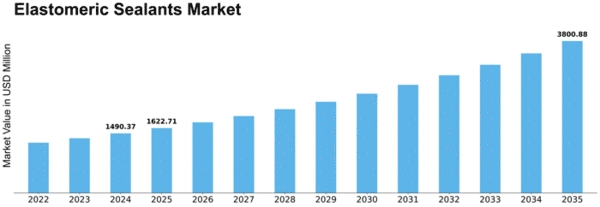

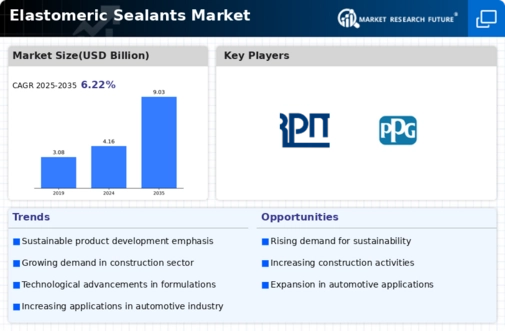


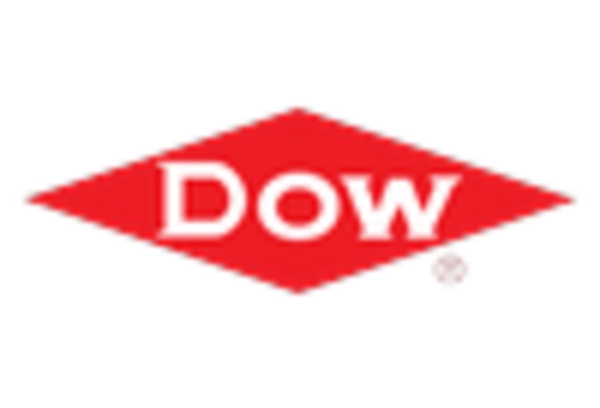
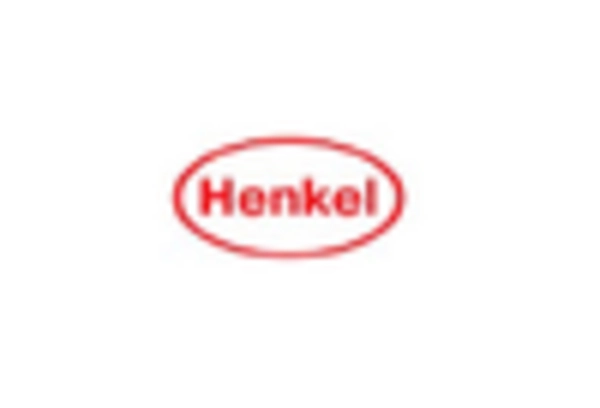
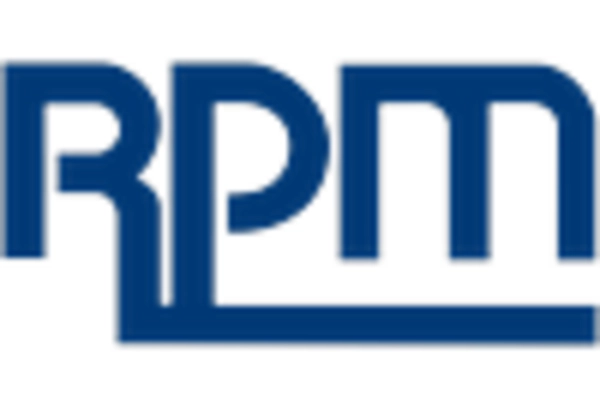










Leave a Comment